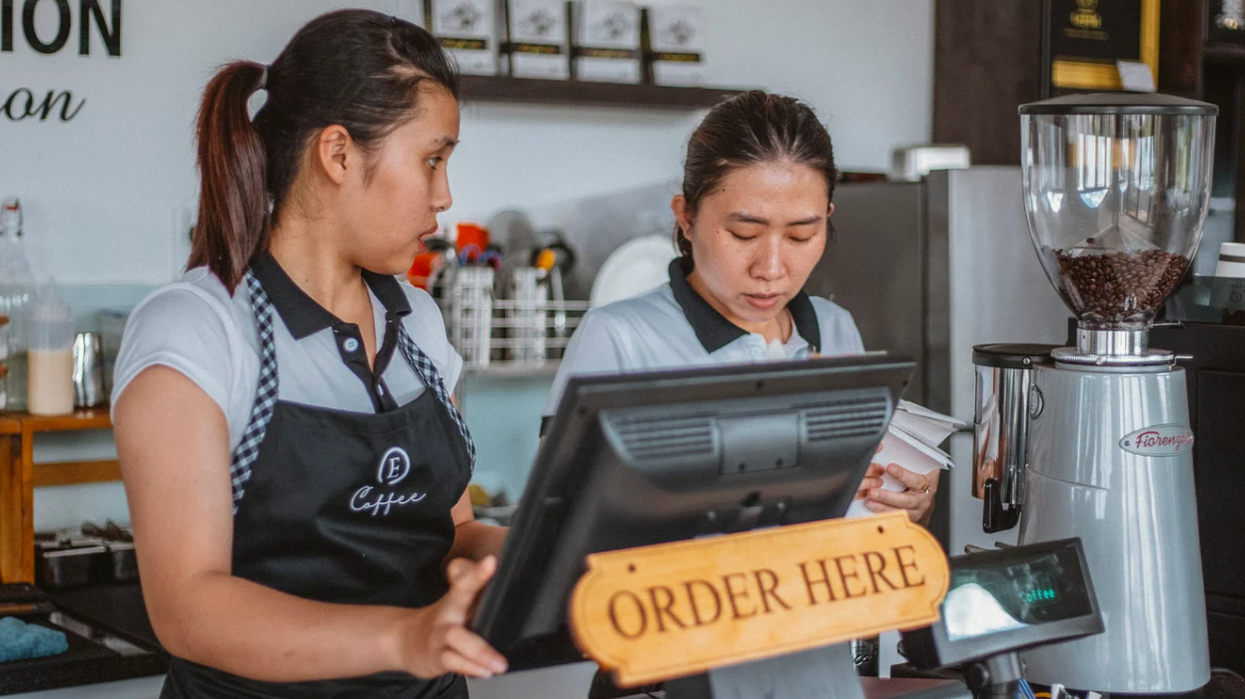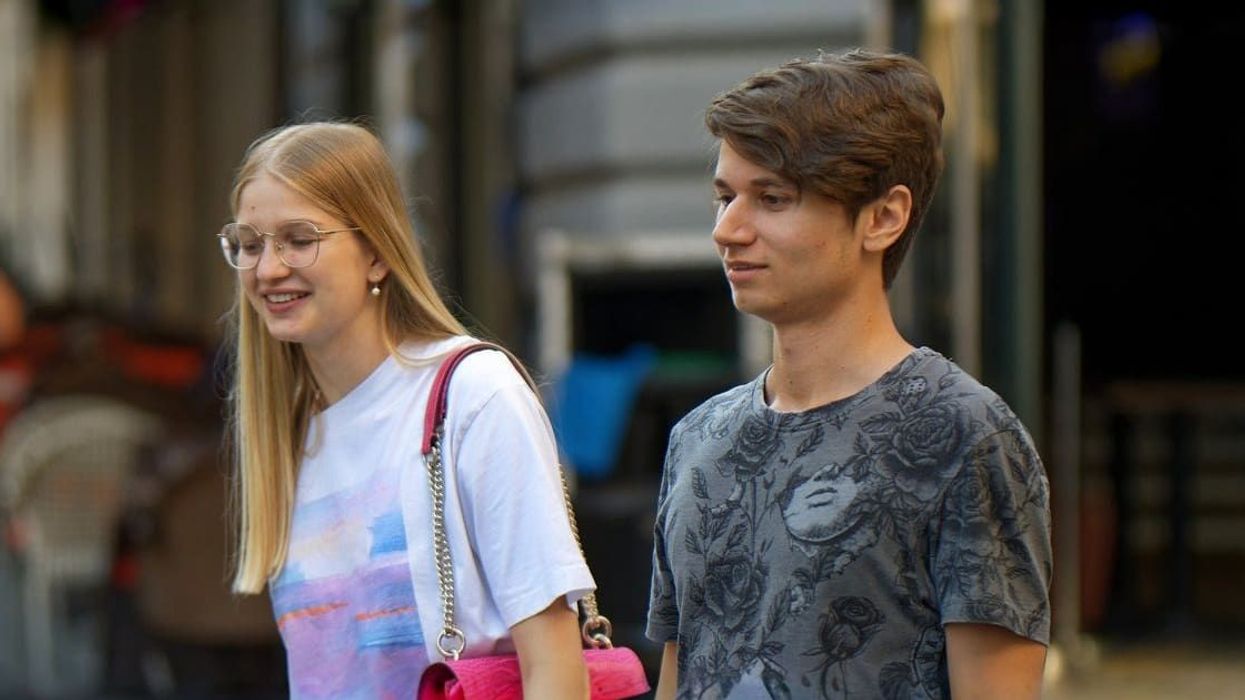On the outskirts of Shenzhen, up a small mountain and around a bend, is a Buddhist temple. At first glance, it looks like any other Buddhist temple-vibrant yellows and reds, wreaths of flowers celebrating the Chinese New Year, devotees with incense in hand, waiting to offer prayers to the temple's 12 different Buddhas. Even the on-site restaurant, in keeping with Buddhist tradition, is vegetarian. But lining the ground floor of the orange pagoda are gift shops (several of them) and illegal minibus drivers perch just outside, ready to ferry tired worshippers back down the hill to the city for a few cents a head.It's the last few days of the Chinese Spring Festival, and under the bright sun, the ornate pavilion looks lost in time. The whole complex could date from the beginning of the last century-ancient in Shenzhen. Except it doesn't. It was built in 1990, which makes the 102-year-old head priest 84 years older than the temple he cares for."There are no old buildings in Shenzhen," explains a worshipper with a laugh.In a city built on expectations and the promise of a new China, the temple is an oddity-a building made to look old. Here, gleaming skyscrapers are prized, shooting up into the sky with improbable speed to accommodate the hundreds of Chinese who show up every day to find work. And from an observation deck on the 68th floor of Shenzhen's tallest skyscraper, one can track the city's three-decade rise through its rapidly shifting architecture: dull concrete apartment blocks with oppressive metal window bars (early 1980s), low-rises covered in bathroom tiles (mid-1980s), Pepto-Bismol-pink silos (early to mid-1990s), Hong Kong meets Miami pastel (early 2000s), and large, curved-glass showpieces (post-2004). In all directions, cranes shift materials to brand-name condos and business towers designed by superstar architects. Nearby, a high-rise looms 40 stories in the air. It looks about a year old, but if you look closely, the brick is already starting to discolor. Beside that, a structure has been razed.In 1979, Chinese leader Deng Xiaoping chose a sleepy Pearl River Delta fishing village about 20 miles from Hong Kong to be a "special economic zone," a testing ground for China's experiments in capitalism. In the nearly 30 years since, Shenzhen has exceeded all expectations. It has exploded from a population of 70,000 to at least 10 million. It has also become a high-tech business destination with a massive container port-the fourth largest in the world-and a stock exchange surpassed in China only by those in Hong Kong and Shanghai. But listen closely in the city's markets and one can hear migrants from Sichuan and Hunan worrying that their jobs won't cover their big-city rent; cabbies stopped at red lights discuss the feasibility of striking for better pay. Like any big city that promises a better life, challenges here abound.
A woman walks behind an advertisement for a new development in Shenzhen.Every day, hundreds of migrants arrive at the Luohu train station. Situated above a five-floor flea market selling counterfeit goods, the station teems with chaos. Along its central courtyard, bordered by stands of gigantic bamboo, a group of young men in leather coats, designer jeans, and bootleg sneakers squat on small stone planters, their eyes fixed on the next crop of newcomers, cigarettes turned upward so that they burn slower. Every so often, one of them attempts to change money for a British couple, who heed their guidebook's advice and turn their backpacks to the front as they walk away. Just past the station, a sidewalk sex bazaar takes shape. For three blocks, tired-looking and dumpy middle-aged madams hawk "massagie."Migrants sit on curbs across the boulevard from the Shangri-La Hotel. One man wears a threadbare herringbone suit and scuffed, pointy-toed black dress shoes. His clothes, dark tan, and hardened face all reveal a lifetime in China's impoverished, agrarian interior. If Shenzhen is China's New York City, then Luohu is its Ellis Island.When Echo Yang first visited the area in 1983, she saw a vastly different place. "There was nothing there," she says. "It was just deserted. It was very undesirable." At the time, Luohu was the city's only district. By the time Yang graduated from college in Hunan province and returned to Shenzhen, in 1999, the city had ballooned-six districts instead of one, with the core shifting from gritty Luohu to the more cosmopolitan Futian. Now 29, Yang works in the Shenzhen High-Tech Industrial Park for Lenovo, the Hong Kong-based company that has acquired IBM's laptop division. IBM, where Yang began her career, is heavily invested in Shenzhen. It has located its world procurement headquarters at SHIP, joining foreign giants like Philips, Compaq, Olympus, Epson, Lucent, and Thomson. In 2005, exports from the park increased 23 percent-to $8.746 billion.Yang embodies the city's new generation: College-educated and upwardly mobile, her heart is set on business school at Northwestern University. Yang is about five feet tall with a ready smile, short hair, and a quick laugh. In keeping with Chinese tradition, she lives at home with her parents, who have retired and joined her in Shenzhen.
| Quote: |
| I have mixed feelings toward this city. A month ago, Shenzhen was elected China's most suitable city to live in. Rich people, they think this place is very good, but for common migrant workers, Shenzhen is probably the most undesirable city to live in. |
| Quote: |
| Compared with Beijing, Shenzhen is less political, more freestyle. So that's why I prefer this city to other Chinese cities. I disagree with those people who say Shenzhen has no culture. Personally, I think it's bullshit. |
















 Otis knew before they did.
Otis knew before they did.